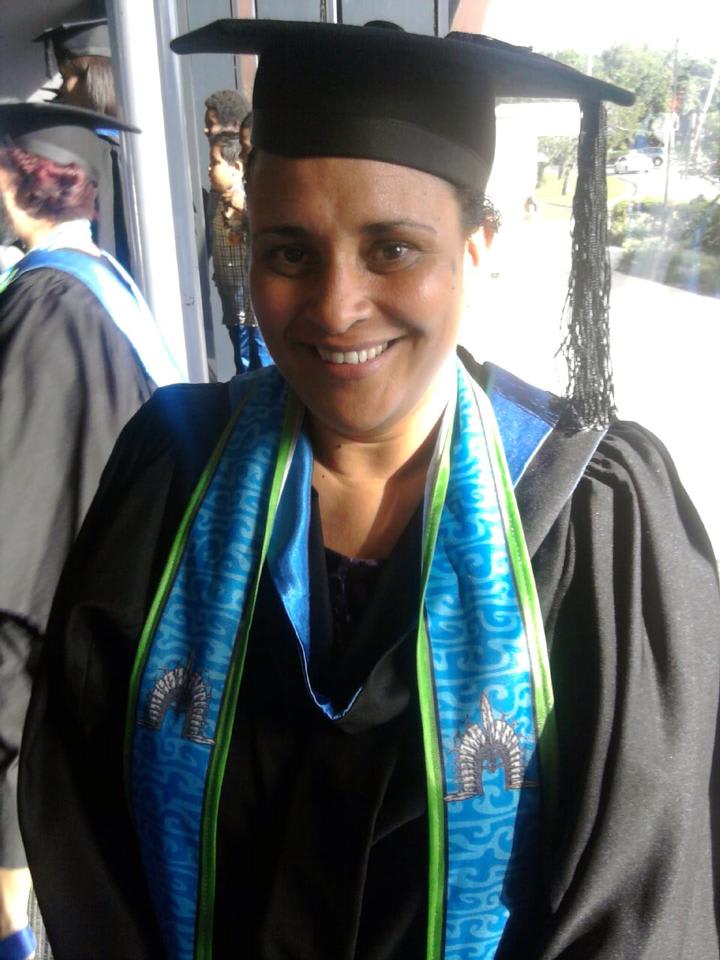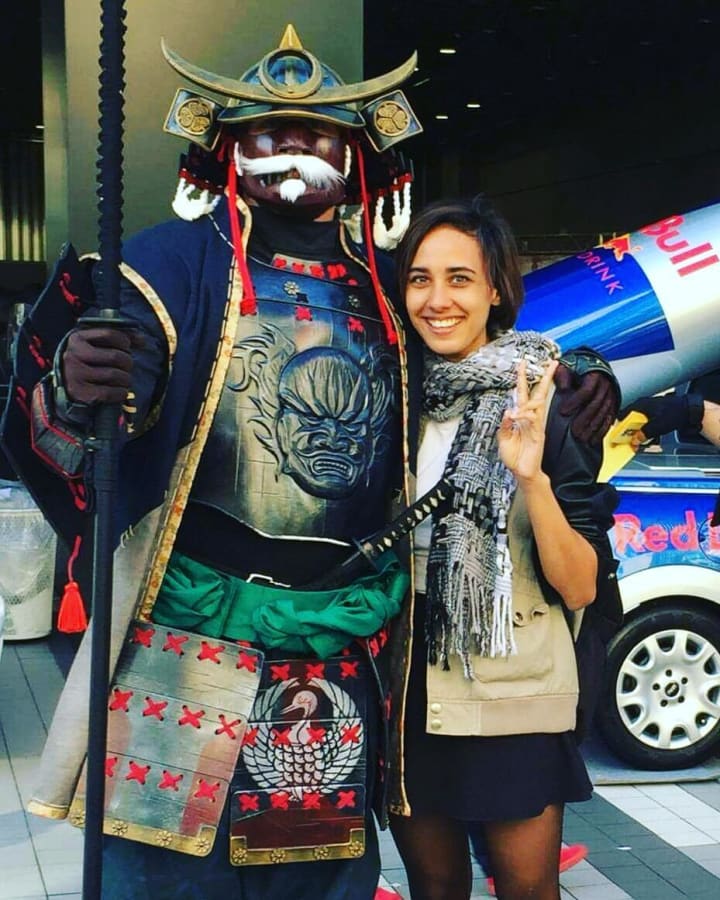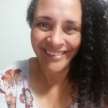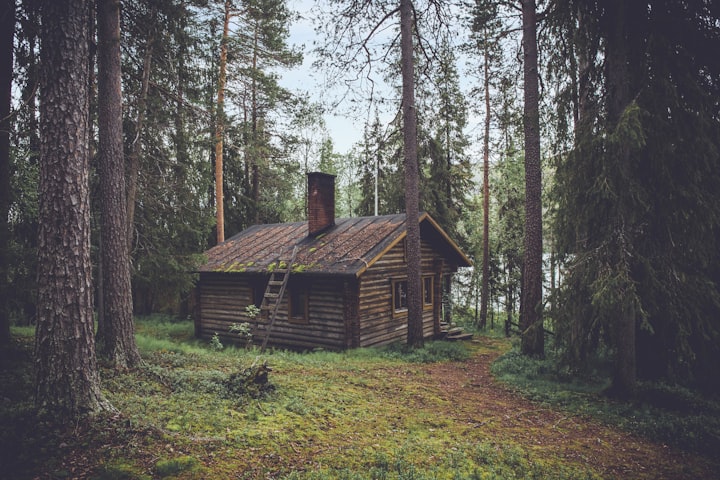
My daughter never got to meet my mum who died around 3 weeks before I turned 13. My daughter also never got to meet my grandmother who died when I was 22. She was born a short 4 years later. However, when she sent me an image in December 2020 on Messenger, I realized she not only felt connected to them but that their influence was taking effect on her life just as they had always been on mine.

Admittedly, I was not convinced by the accuracy of the image above so did a little research and I learned that the cell that was destined to become the egg that was fertilized and became me, began its’ mitotic and meiotic processes in my mums’ ovaries as she was growing within my grandmothers’ womb. I learned that in essence, the cellular start of me was nurtured by my grandmother just as my daughter's cellular start was nurtured by my mother. This simplified expression of a complex process of connection and interconnection, division and growth, and love and nourishment, stayed with me long after I first saw that message 6 months ago. Why?
Starting with context...

The Torres Straits is a group of smaller islands in the northernmost part of Australia between New Guinea and the mainland. My grandmother was born there in 1922 and in 1940, married a 22-year-old Torres Strait Island man on Thursday Island before they relocated to the mainland, with 2 small children, when the Torres Straits were evacuated under the threat of Japanese attack and invasion in World War 2.
They eventually settled in a small township south of Cairns and had another 13 children - 15 in total. My mother was the 10th child, their 8th daughter, born in 1954. Not too many people outside of Australia are aware of our country's history with Indigenous people, and I won't go too in-depth but will share some little facts purely because the context they provide makes my grandmothers' and mothers' stories more remarkable.

Australia became a federation in 1901 when 6 British colonies agreed to unite. The Constitution denied citizenship to Aboriginal and Torres Strait Islander people, so each State still had power over them, and they were not even counted in any census but thought to be equivalent to plants and animals. By 1907, the relatively untouched Torres Strait Islands also became subject to the Aboriginals Protection and Restriction of the Sale of Opium Act 1897, which removed the basic freedoms of where people could work and live and what they owned. Under this Act, Queensland had entered what is known as an era of protection where Government Protectors controlled the lives of Aboriginal people right up until the 1970s. A small number of Torres Strait Islanders were also removed from their traditional lands between the 1920s and 40s.
Then there were the segregationist policies and practices that continued until the 1950s, which separated Indigenous and non-Indigenous people in movie theatres and hospital wards, and permitted publicans to refuse service to Aboriginal adults and schools to deny enrolment of Aboriginal children. My grandmother was born in 1922 in the Torres Straits which meant she was born in these eras of protection and segregation.

My mother was born in 1954 on the mainland in Queensland which meant she was born in eras of segregation and assimilation. Assimilation policies were developed under the belief that by forcing non-"full-blood" Aboriginal people to adapt to, and adopt the culture of, the dominant population, Australia would be rid of the "Aboriginal problem". One of the most devastating policies from this era saw an increase in the forcible removal of Indigenous children from their families and being placed in white foster homes or institutionalized.
In 1962, Aboriginal and Torres Strait Islander men and women had the option to vote in Federal elections however it wasn't compulsory to enrol. By 1965, Queensland gave Indigenous adults the right to vote in State elections. Then the 1967 Referendum resulted in my mum, all of her siblings and parents, as well as other Indigenous Australians, finally being considered human enough to be counted in the census and to be governed by Federal laws that would supposedly address inequalities. However, it wasn't until 1984 that it became compulsory for Indigenous Australians to participate in the country's democratic processes and vote.

That was when I was 12 years old and 6 years shy of being old enough to vote myself. I was born in 1972 also on the mainland in Queensland which meant I was born in an era known as integration, self-determination, and self-management. 1972 was when the Australian Government finally recognized that Indigenous people had a right to participate in decision-making processes that impacted their own lives. However, despite receiving funding, many local communities still did not have a say in what projects would be developed for their people.
My daughter was born in 1998 on the mainland in Queensland which meant she was born in the era of reconciliation. This began in 1991 when the Australian Government supported a push for unity and respect between Indigenous and non-Indigenous Australians. Various reports and inquiries documented the oppressive and racist practices of past policies and processes, as well as their consequences which continue to impact lives today. In 2008, when Tewekwitha was 10 years old, our then Prime Minister, Kevin Rudd delivered an apology to Indigenous Australia in Federal Parliament that was broadcasted nationally.

So, what does this mean?
Always take that first step
My grandmother ironed other people's clothes. To some that may seem menial and not a boss move. However, as a little girl institutionalized in a Catholic convent where she was taught domestic duties, received almost no education, and where her labour was exploited, she used society’s limited beliefs of her and as a working parent, became a paid employee. Also, in an era where the Government had the right to say where Indigenous Australians worked and lived and what they owned, my grandparents both worked, earned incomes, and became homeowners. In today's world, my grandmother would have been called creative and adaptable. She would have been called an entrepreneur. However, she taught me a lot more than using what was designed to destroy for good. She showed me how...
My grandfather died when I was 5. As it was a couple of weeks before Christmas, our home was filled with family on vacation. My grandmother was at bingo and I clearly remember grandad leaning forward in his armchair but not the ambulance that took him to the hospital. He died from a massive heart attack.
I also remember grandma coming home from bingo and the moment she was told what had happened. I don't recall who said what and the words that were said, but I clearly remember her taking one step backward then her straightening up and re-composing herself. When she entered the house that night, 5-year-old me saw her quietly draw upon an inner strength and step forward not as George Ambrum's widow, but as the matriarch of our family. Her grace and courage in taking that first step still resonates with me today.

My mother was raised in an environment where white and black children were not free to interact. The threat of her being taken from her family because of the colour of her skin still existed in governmental policy. However, one of her first jobs was working in the lab at a local Sugar Mill - in a male-dominated environment. I don't know what that involved but I do recall that she always worked and loved to play basketball. She was popular and fun, and outgoing and generous. Her smile and warmth made her friends with many of all races and genders, but cancer ended her life the year she would have turned 31.
As a child, watching the most important person in the world to you die is nothing short of surreal. You always expect them to live. You never think death would force them to leave you behind, but it did. It seemed the entire township turned out to honour her at her funeral - female and male, young and old, and black, white and all shades between. I witnessed an outpouring of love unlike any other and to this day (36 years later), many people still call her their friend. She faced cancer head-on with the same grace and courage my grandmother did the night she became a widow and fought so hard to live. Mum's humour and energy, as well as her capacity to dream and hope for our future despite the pain that afflicted her, has become my beacon of light many a dark night.

I became a parent at the age of 18 and 10 years later, became a single parent to 5. On a personal note, and in a strangely beautiful sense, I always felt as though I was carrying my mum with me long after her passing. Then when my grandmother passed when I was 22, I felt her light also encourage and strengthen every cell within me. So, I changed the narrative and studied as I worked. I completed these studies in 2012 and in 2013 graduated from James Cook University with a Bachelor of Social Work. Not bad for a little Island girl growing up in a society that paid lip service to my intelligence but rarely supported it.

My grandmothers' quiet strength, grace and courage, and my mothers' fight, humour and hope, not only nourished and nurtured me but has found their ways into my daughters' veins and armoured her. In 2016 she applied for, and was awarded, an AFS full scholarship which meant she lived in Japan on a student exchange program for 12 months. She even featured in a documentary that was broadcasted nationally in that country.
While in her final year in high school in 2015, Tewekwitha participated in the Schools Constitutional Convention for Aboriginal and Torres Strait Islander students and was the school’s speaker addressing the theme of Constitutional Change, was awarded 1 of 20 positions in the UQ InspireU Residential Science Camp which she attended over the school holiday period, and was Secretary of her school's Student Council Executive and her House Sports Captain.
That was an amazing feat considering Tewekwitha was raised in a society where past policies and practices were recognized as oppressive and racist, and reports and inquiries described the intergenerational trauma resulting from these, however, a significant number of the general public did not appreciate why. This remains the case today however change is happening - look at some of the Facebook comments made to our MP in this weeks' response to the Queensland Government's acknowledgment of these past policies.
Today Tewekwitha lives in our State's capital city and after exploring concept art and design, will be embarking on her personal dream to teach Japanese in high schools. Also, I am studying for a Master in Mental Health Practice with a goal to become an accredited Mental Health Social Worker later in 2022.
According to Maya Angelou, the 4 generations of Ambrum women can only be described as phenomenal. We embraced, and continue to do so, deep-seated confidence and an expression of beauty that does not depend on how society chooses to define us, but which comes from that "inner mystery" no other person can touch.
What is that inner mystery? Well, the answer is at the start of this story and lies in that image my daughter sent me all those months ago.
So to be a boss, always take that first step and work the phenomenal collective power that crosses time and space and connects us all!
Thank you for taking time out of your day to read this. If you enjoyed it, please send me a like by clicking the heart below or by sending a tip. I appreciate your support.
About the Creator
Georgie
Storyteller Scribbler Dreamer Social worker Learner Mum Australian so my spelling might be a bit different to yours 🤍






Comments
There are no comments for this story
Be the first to respond and start the conversation.